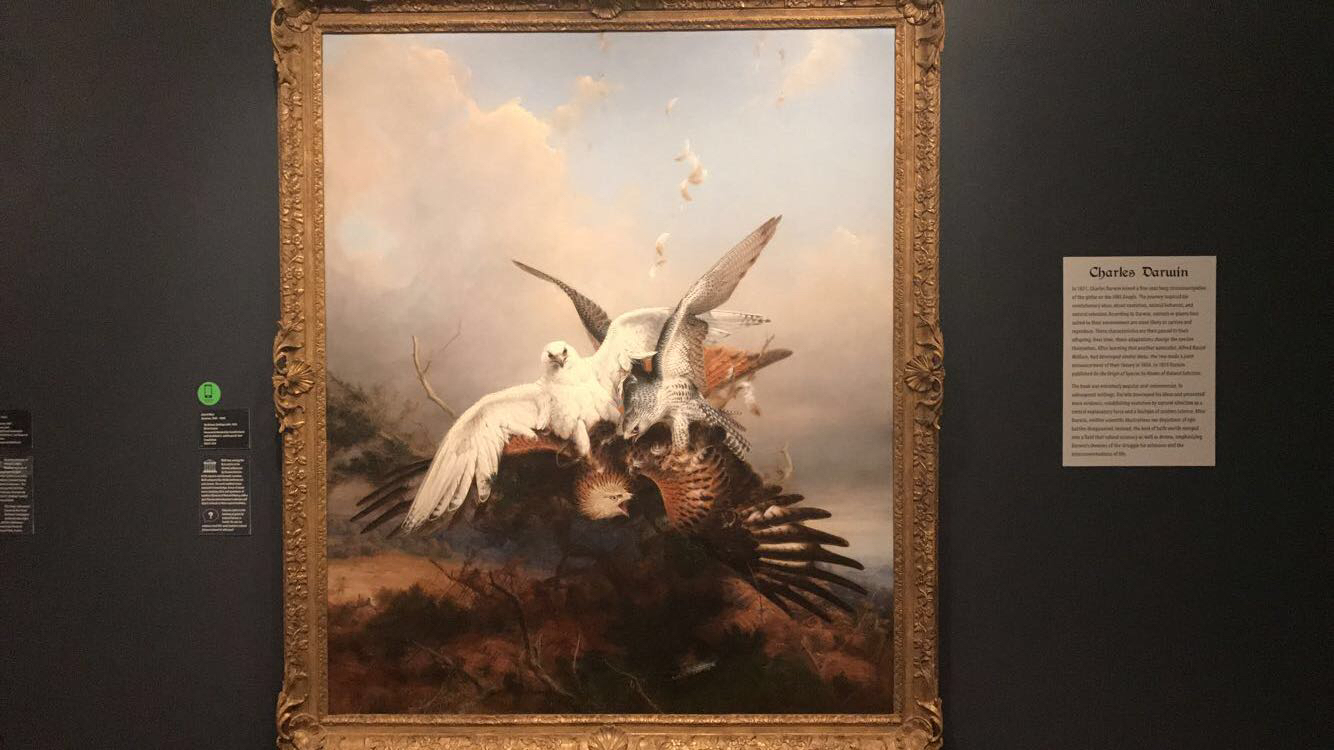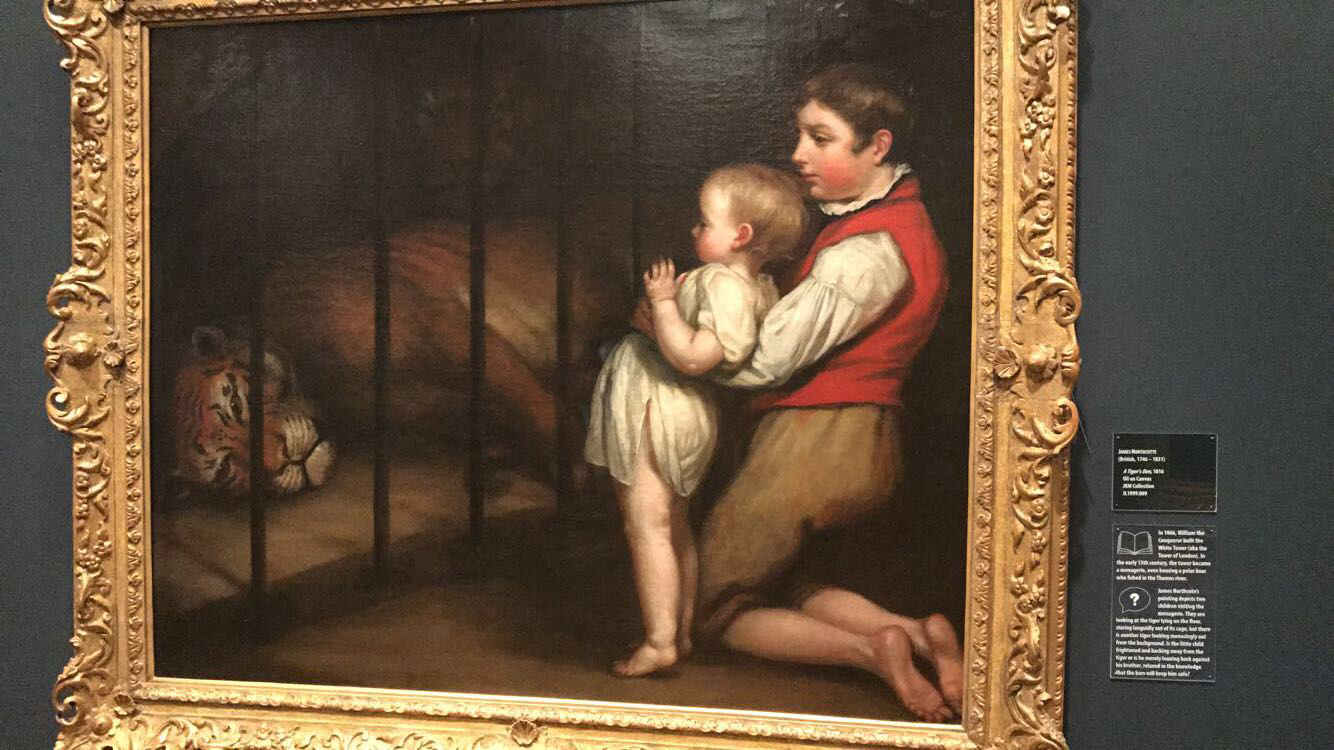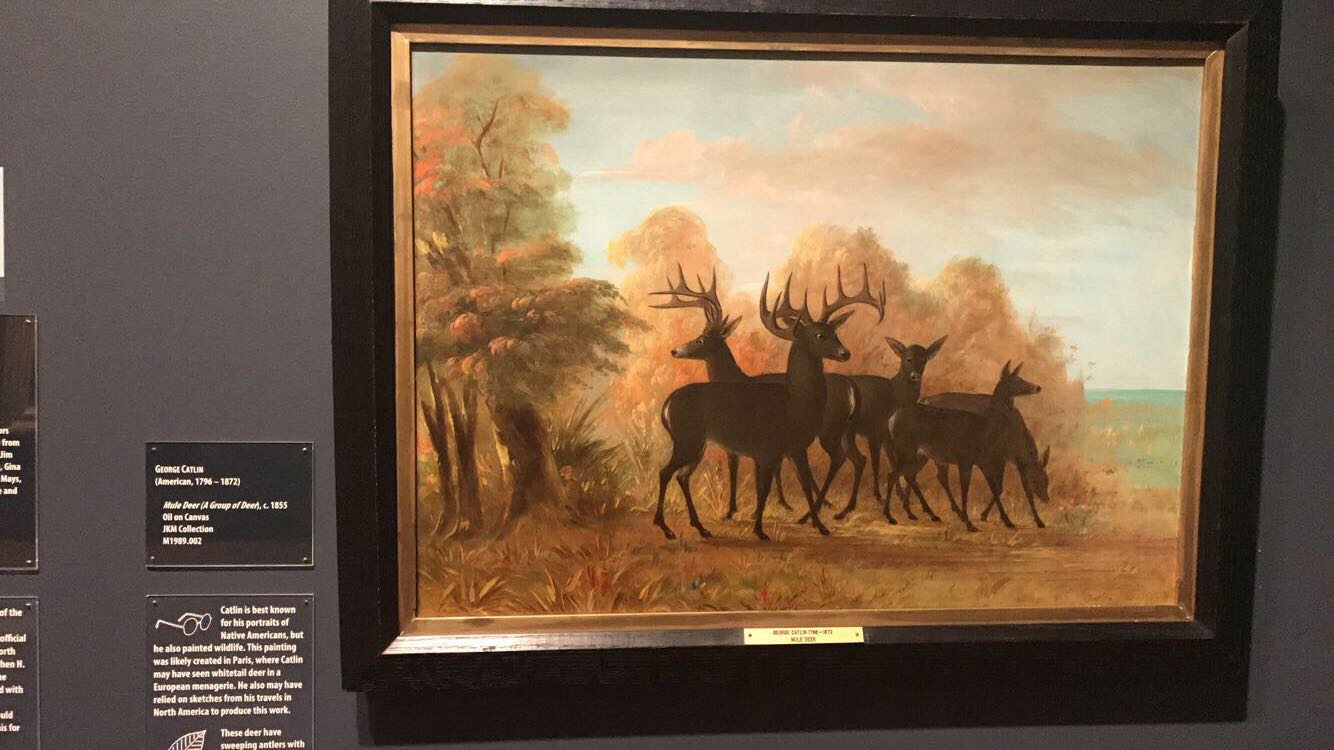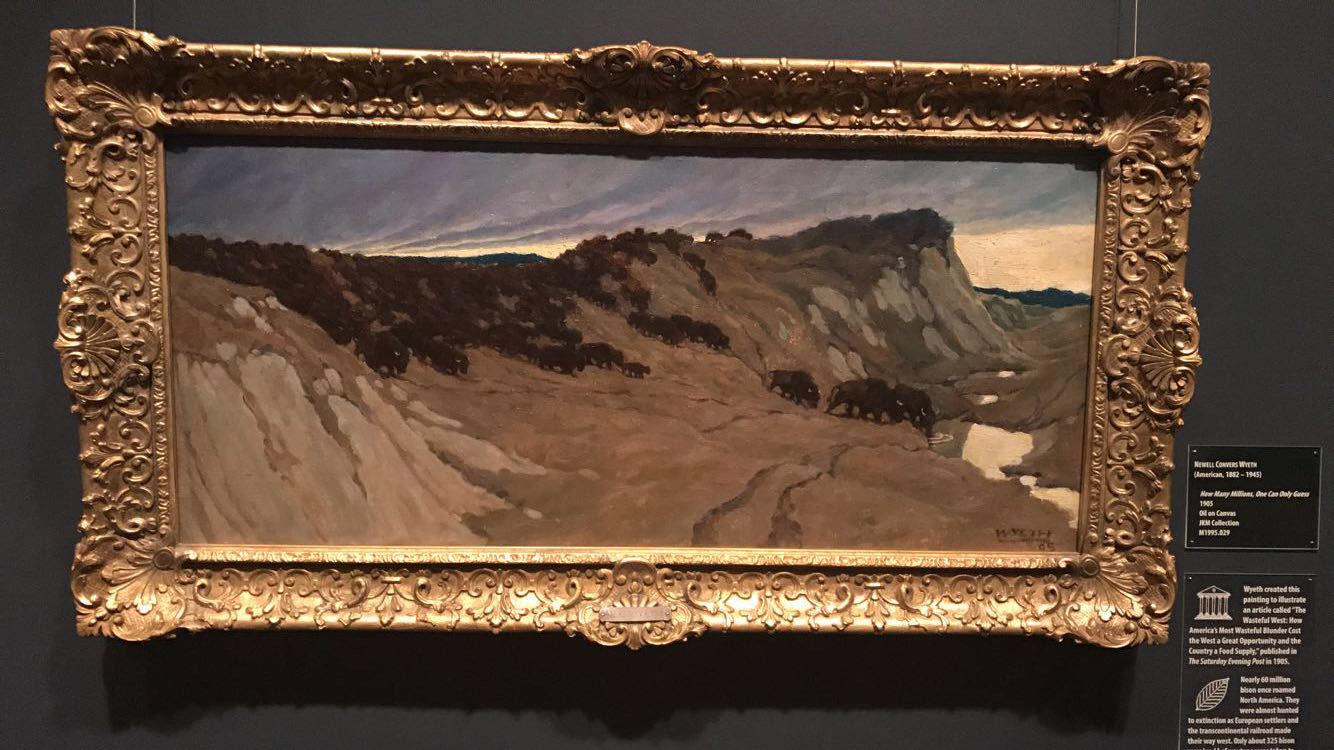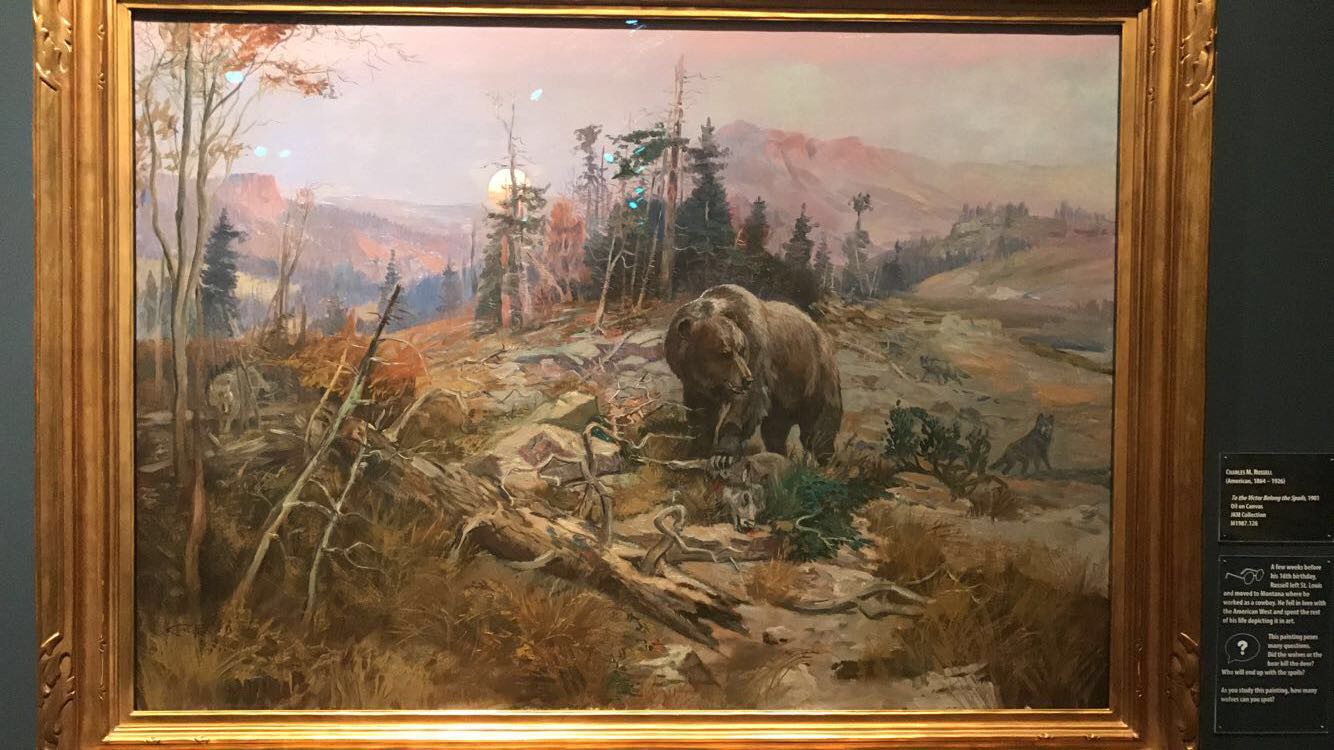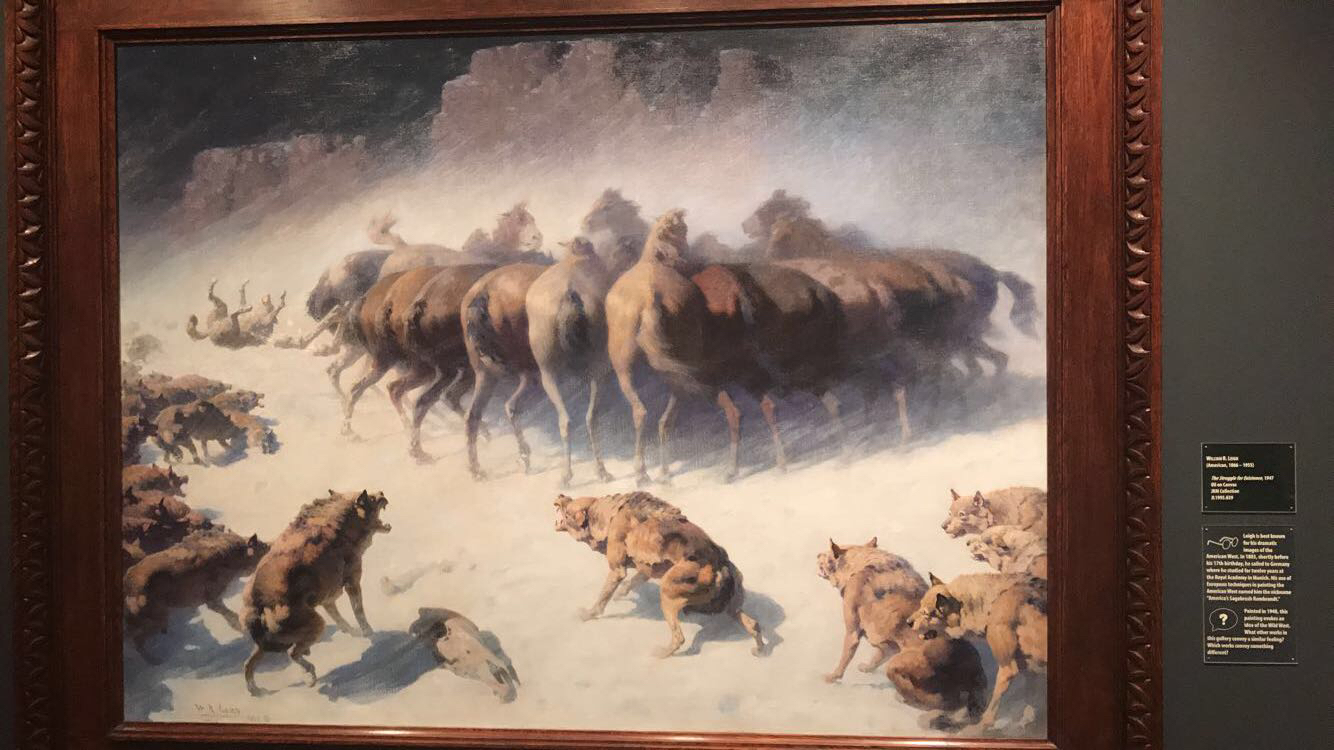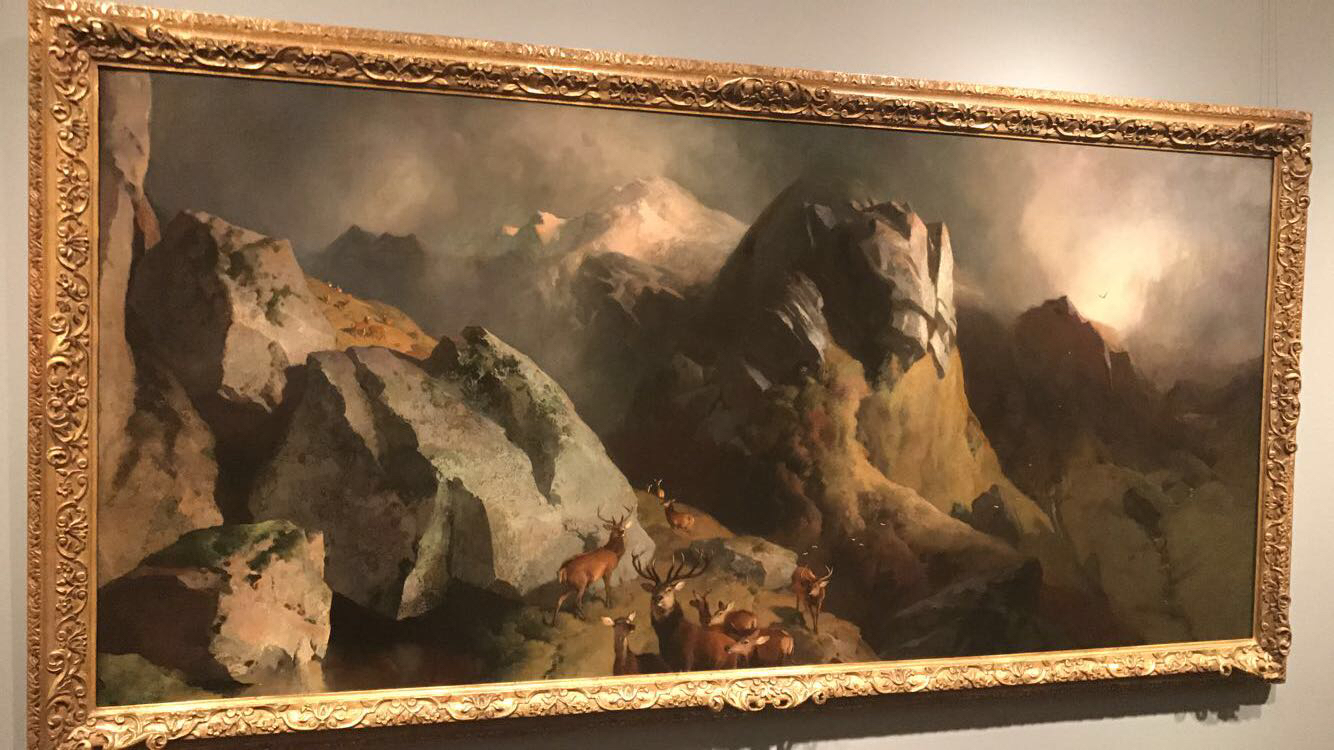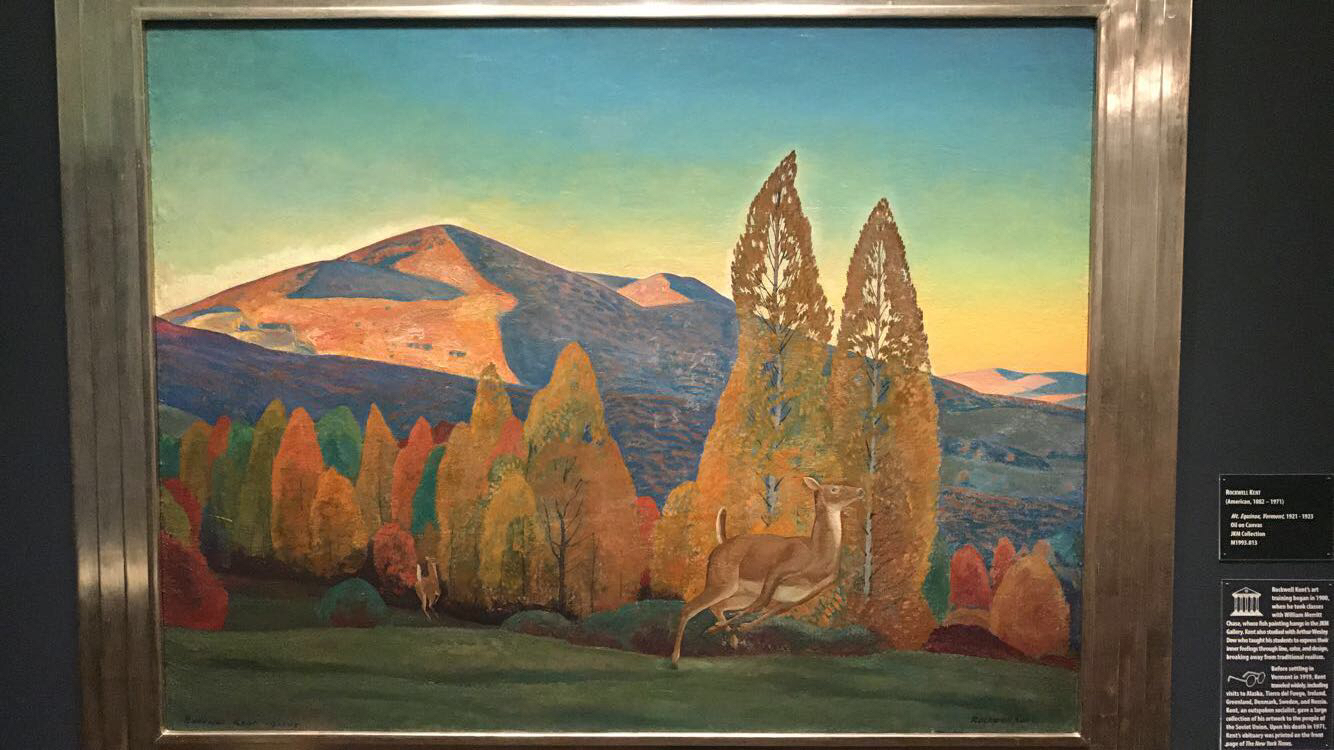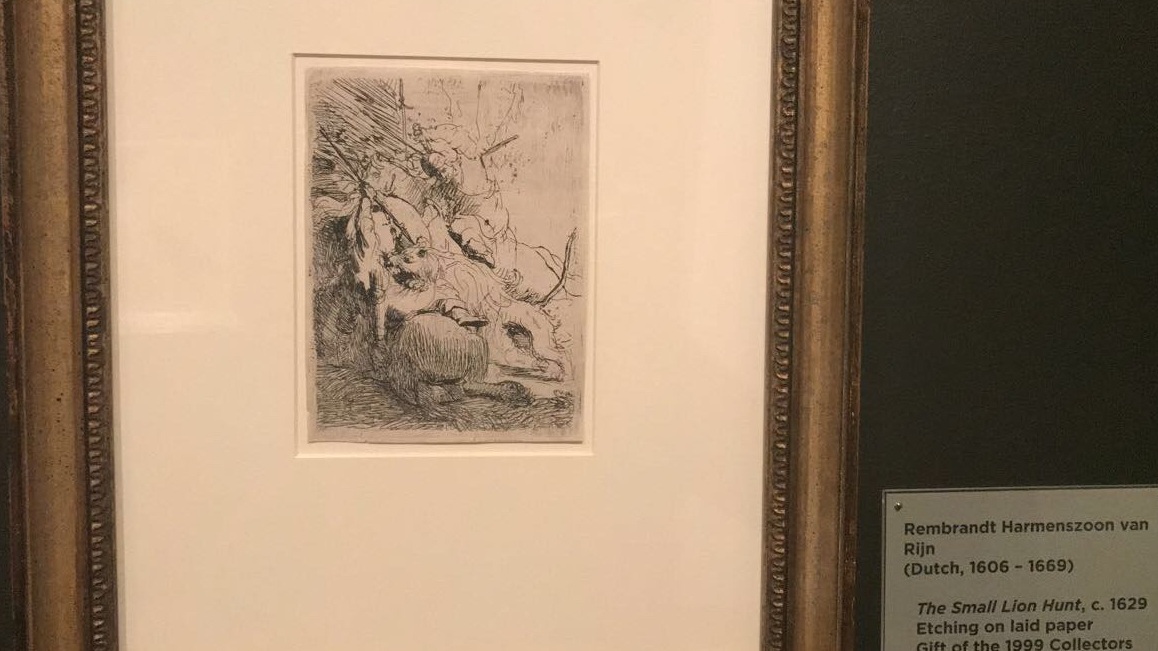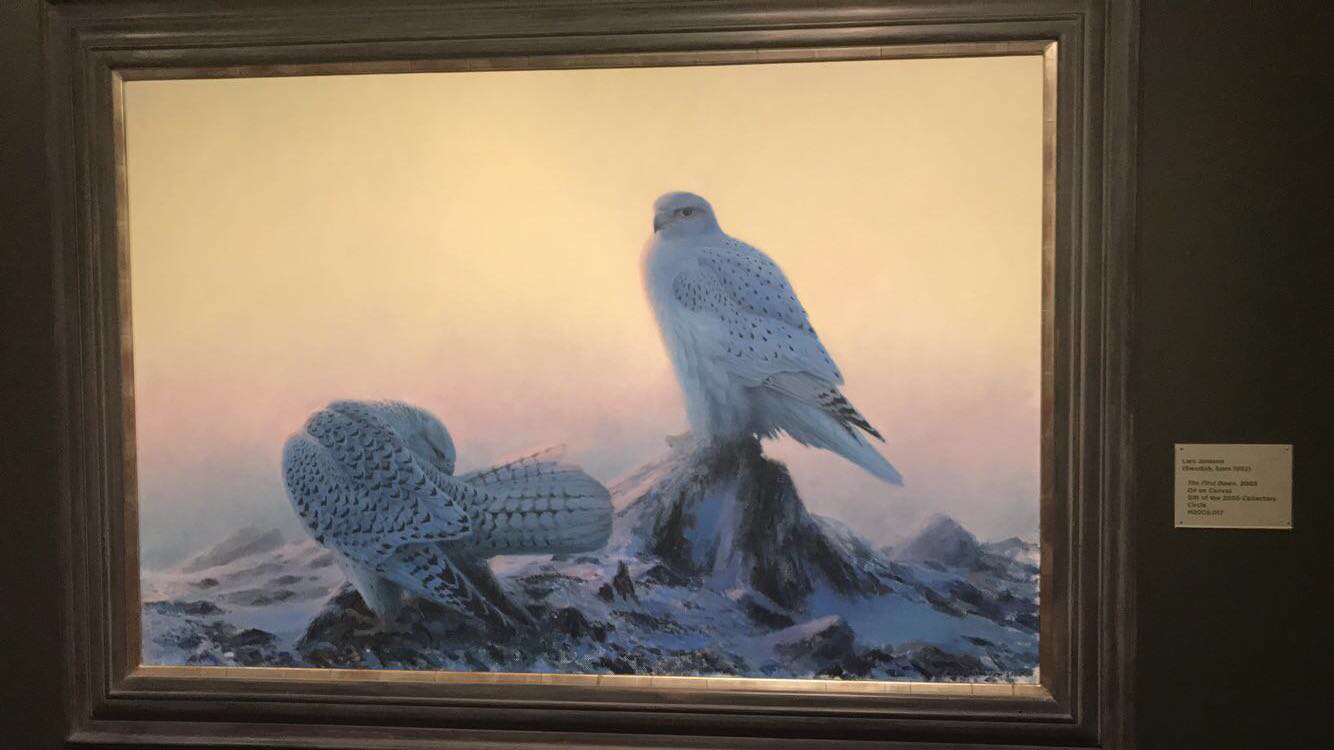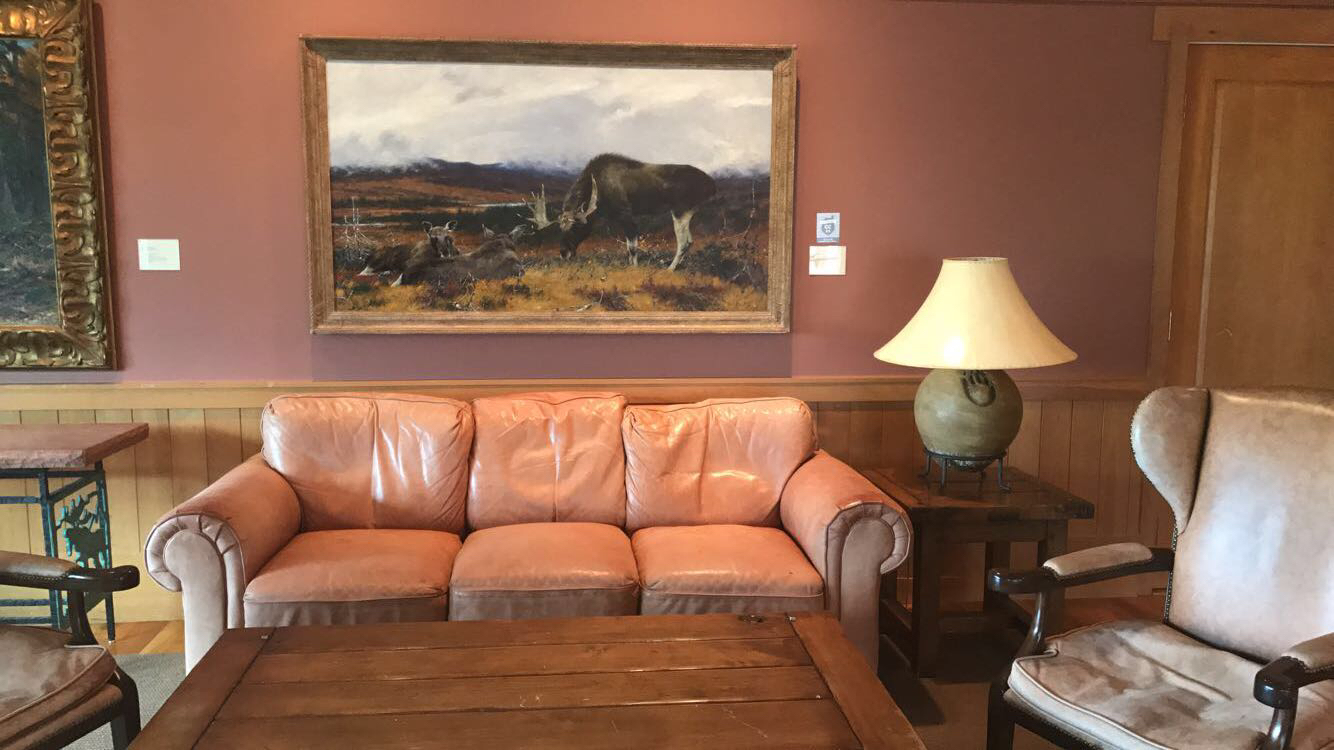Wyoming Day 1 - Wildlife Art, Actual Wildlife, and Western Towns
Today was my first full day in Wyoming, a state I mainly knew from being the home of Yellowstone Park and a place that Garfield claims doesn’t exist, so I was excited to go out and explore. My first stop of the day was a fantastic breakfast spot called the Beta Coffee House in Buffalo Bill’s town of Cody. I got some coffee to perk up, and their signature Beta Burrito which came with bacon, cheddar, eggs, black beans, green chiles, and fresh cilantro wrapped up in a tortilla and then panini pressed. That little bit of extra griddlin’ gave the whole thing a great texture and added smokiness which coupled with the super fresh ingredients made for one hell of a breakfast burrito that was definitely Alpha in my heart.
After breakfast I started making my across the state to Jackson, via a combination of Shoshone National Forest, Yellowstone, and Grand Teton National Park making for some simply amazing sightseeing. My first stop was just a mile or so from the coffee shop and that was historic Buffalo Bill Dam. Originally called the Shoshone Dam, it was the first concrete dam built in the united states and at the time of its completion in 1910 it was the tallest dam in the world at 325 feet. It was all part of “Buffalo” Bill Cody’s plan to irrigate the Bighorn Basin and make the semi-arid land prosperous for agriculture and tourism. While the history of the dam is interesting, the most striking thing to me was all the crazy rock features on either side of the Shoshone River. They look like someone just piled a bunch of slabs on one another willy nilly and I can’t even imagine people at the turn of the century attempting to cut through them to make their dam.
Two illustrate the insane effort of building this massive dam when they did, the visitor center had some early machinery on display. I was particularly drawn to this old Wooden Ball Plug and Hydraulic Valve that were used to control the water level when work needed to be done downstream. Imagine your life depended entirely on a big ball of wood and concrete stopping tons of water. It’s just wild to imagine, but now that technology has advanced beyond them these old hunks of history sort of look like a modern art piece with their contrasting materials and oddly geometric shapes. I was really captivated.
The trip to Jackson was about four hours of driving through beautiful park lands with occasional stops to marvel at the scenery and/or nap. I was impressed by just how much variance in ecosystems there were with warm sandy beaches looking out over snow-capped mountains and dry brushland transitioning into lush forests. It was just breathtaking.
I even saw live grizzly bears in the distance! It’s not a particularly great photo, but I wasn’t exactly going to get closer…
My first stop after trekking through the wilderness was the National Museum of Wildlife Art in Jackson Hole. This unique art museum housed in a massive 51,000 sq. ft. building made to look like a Scottish Castle (just because) and overlooking the sweeping green hills of a National Elk Refuge. The museum collects over 5,000 pieces of art in some way related to wildlife, which is both fairly niche and incredibly broad in scope as all kinds of artists all over the world have at one point or another done work featuring animals, plants, and/or landscapes. Before I even entered the museum I was thoroughly impressed by walking along the museum’s sculpture trail, which beautifully compliments the natural wonder of the area with various sculptures that range from stunning realism to mythic surrealism. It’s a heck of an introduction, and any skepticism I had about a whole museum dedicated to just animal art was immediately washed away and I was excited to see more.
When you enter the museum, you’re greeted by a cavernous lobby that sort of resembles the den of a massive hunting lodge, but all along the ceiling are tangram like figures of different prototypical western animals. It’s makes for a pretty impressive welcome.
From the lobby, it’s a pretty straight shot to the main galleries, which are guarded by a scarily lifelike and muscular bronze sculpture of a jaguar by Anna Hyatt Huntington. Luckily this jaguar has become more of a cuddly house cat over time than an apex predator.
The first gallery I saw was dedicated to pieces by 19th and 20th century American artists depicting the Yellowstone region and all it’s scenic glory. There were some big names like Thomas Moran and Thomas Hill, but the thing every piece had in common was the sheer scale and grandeur of the dominating landscape. Even dramatic scenes like stags fighting or eagles soaring were completely dwarfed by the natural beauty around the animals making for some really lovely and powerful works.
My favorites here were some of the few scenes where the animals were slightly more front and center but you still get some sweeping panoramas because they display the artist showing off in both small and large scales. My highlights were: Midnight Serenade by Robert Kuhn featuring a lone wolf howling a desolate snowy mountain; Domain Invaded by Newbold Hough Trotter (a hilariously fitting name for this museum) featuring a small band of Elk looking out over a vast canyon landscape; the dramatic Grizzly by Ken Carlson featuring a bear taking up the whole frame with lively kinetic brushstrokes giving the piece a surging energy; and the haunting and jawdropping Chief by Robert Batmen featuring a massive Buffalo emerging from a cloud of upturned prairie dust.
Amidst all these beautiful paintings, there were also some impressive sculptures. The standouts in that department for me were an impressive mahogany sculpture by David Everett called Pantheon featuring all sorts of different animals improbably on top of another and a gravity defying bronze sculpture called the American Pronghorn by Richard Greeves.
The next gallery featured works by turn of the century European artists. They were more studious and classical than some of the more modern American pieces and they were also probably made more from imagination than actual observation given that a surprising number of them had tigers in them which aren’t exactly native to mainland Europe.
My favorite pieces were perhaps the most bizarre and dreamlike, Arthur Wardle’s The Enchantress featuring woman in a flowering lavender gown nuzzling with a leopard in a field of flowers and pioneering female artist Rosa Bonheur’s gorgeous night scene, King of the Forest.
Next up came some pre-20th century American works featuring some of the earliest painting of the American West and its native fauna. There were works by the likes of William Cary, George Catlin, and William Merritt Chase.
My favorites here were: a creepy snarling bear by John Woodhouse Audubon; a shimmering autumnal scene of deer drinking water by Thomas Worthington Whittredge; a super weird scene by William Holbrook Beard of two bashful young bears talking to a grinning older bear called So You Wanna Get Married, Eh?; and an incredible dramatic vista of a Prairie Fire and Buffalo Stampede by William Jacob Hays Sr.
Next up were more modern scenes of the West with pieces by stalwarts like N.C. Wyeth, C.M. Russell, and William Leigh delivering some rugged beauty:
There were some sculptures in here too including a roosting vulture by Leonard Baskin that looks remarkably like a giant walnut and a sweetly gentle scene by Edward Kemeys of a mama panther and her cubs.
One of the largest and most staggering pieces was a breathtaking foggy scene called Deer Pass by Sir Edwin H. Landseer that took up most of a wall and totally knocked my socks off:
Up next was one of the crown jewels of the museum’s collection, the largest public collection of works by Carl Rungius in the world. Rungius born in 1869 in Germany, but after visiting Wyoming in 1895 he fell in love with the American west and emigrated there permanently the next year. Besides being an artist, Rungius was an avid naturalist and hunter, and he would often spend days in the wilderness directly observing and painting the animals and scenery with remarkable candor. He was one of the first high profile artists, European or otherwise, to make a living solely as a wildlife painter, and his large canvases devoid of any inkling of human civilizations are truly dazzling displays of colors and scenework.
Along one whole wall, salon style, was a grid of his smaller landscape pieces withe out the anchoring presence of animals and it was like having dozens of little portals back in time. Even though he certainly takes some artistic license and many of the pieces are pretty impressionistic, it’s incredible in a time before color photography to have such vivid images of times and places that no longer really exist.
Naturally my favorite of Rungius’s pieces, partly because of its excellent artistry and partly because of its supremely ridiculous name, was this portrait of a mountain goat called The Cragmaster:
Just look at that shit-eating grin
Next were some pieces by bigger named modern American artists. I don’t know if it was an intentional bit of a curation, but I feel like all my favorites from this collection feature particularly excellent skies. Clockwise from the top left we’ve got: big rocks and eagles by Maynard Dixon; a sweet bear family by Robert F. Kuhn; a slightly deceased antelope by Georgia O’Keeffe; and a beautifully graceful deer by Rockwell Kent.
Up next was a big display of Native American Pottery, which frequently featured animal pictograms making them the earliest representations of American Wildlife. Because an unhappy by-product of a lot of the beautiful late 19th century work we’ve been seeing was greater migration westward and further expulsion of Native peoples from tribal lands, I was glad the museum at least acknowledged this and gave some small celebration to the truly incredible artwork by people who a lot of these pieces directly hurt. I’m sure it was not always the intention of the wildlife painters to fan the flames of manifest destiny, but I think it would have been disingenuous of the museum to not address it in some way.
The next few galleries were broken up more thematically. We had one featuring modernist renderings of birds. My favorites here were a bronze bird by Steve Kestrel that was incased in beautifully carved wooden box; an art deco-y pelican by Francois Pompon; a Japanese inspired painting of peacocks by Jessie Arms Botke; and a mesmerizing red bronze sculpture by Geoffrey Dashwood of a Scarlet Ibis.
This gallery also had one of the most batshit insane paintings I have ever seen (which is really saying something since starting this trip). I know a lot of artists have drawn inspiration from Greek mythology and have found a lot of material out of Zeus’ seductions of mortal women, by I have never seen anything (for better or for worse) quite like Joseph Stella’s representation of the myth Leda and the Swan. You better believe I laughed very loudly in the middle of the museum, and am still giggling now as I write this.
We jumped continents for the next gallery that brought together some pretty dynamic paintings of wildlife from the grasslands and jungles of Africa. The highlights for me were: the impressive African Suite by Robert Kuhn featuring a dizzying array of locales and creatures; a richly detailed scene of elephants running from a brush fire by Wilhelm Kuhnert; a creepy nighttime jungle scene of a tiger sneaking up on some hunters by one of my favorites Henri Rousseau; and a playful shimmering piece by Lindsay Scott of a frolicking pachyderm.
In the middle of the room was a surging gravity testing bronze sculpture of charging horses, that I don’t know how anyone made.
Working in a very different climate were some arctic pieces that made pretty astounding use of different shades of white to look textured and fully realized instead of stark and bare. My favorites were one of a solitary polar bear by Richard Friese called Arktikwanderer and Robert Kuhn Painting called Five Dall Sheep despite only depicting four sheep which naturally I loved.
Things took an interesting psychedelic turn in the next gallery which featured bright surrealist contemporary wildlife works. Highlights for me were a series of mono-chromatic pop-art penguins with cute little water bottle belts by Belgian artist William Sweetlove; a haunting and hypnotic owl by Peter Gerakaris; and an enthralling Hitchcock nightmare of a painting called Endashian by Tom Uttech.
Next up were some adorably compact sculptures including a sweet scene depicting two bronze elephants helping a third after he was shot by a hunter called Wounded Comrade by Carl Ethan Akeley and a very rotund owl carved out of granite by Steve Kestrel.
In the next section there was quite a blast from the past with some truly incredible etchings of very anatomically suspect lions by Albrecht Durer (1496) and Rembrandt van Rijn (1629).
It was back to birds in the next section with some really lovely modern works on paper. My favorites were: a portrait of two ravens by Jamie Wyeth that makes some fantastic use of negative space that I’m sure captures what it’s like trying to get birds to pose; a captivating oil painting by Lars Jonsson of two gyr falcons in an enigmatic Nordic Dawn; a watercolor by Chris Bacon called Stormwatch that features a little wren nobly standing his post dwarfed by cattails; a chilling portrait of a lone Raven by Robert Bateman; an incredibly delicate watercolor rendering of a hawk and bare branches by Thomas Quinn; and a dramatic rendering of a hunting hawk by the granddaddy of bird painters John James Audubon.
There were some more slightly more surreal modern sculptures I enjoyed such as: the stainless (and eyeless) steel bust of a pronghorn deer by Burt Brent; a very sleek yawning tiger by Anna Hyatt Huntington; and some really bizarre elongated elongated antelopes.
Things got a bit meta with pieces like Barabara Kassel’s Wet Weather depicting a toy safari through a concrete jungle and Len Chmiel’s Life Imitates Art in which a deer casts the shadow of his own pictogram across a rock wall featuring dozens of ancient drawings. Something about these pieces playfulness with the whole form really made them stand out as big highlights for me.
We kept things pretty modern with the next gallery. My favorites were: Pablita Velarde’s bright cartoon-y High Country; James Prosek’s Souther White Rhinoceros blending photo-realism with pop-arty paint by numbers style; the stylized expressionist Lioness by Emily Lamb (an ironic last name); and Richard Friese’s older but interestingly expressive capturing of a lone elk bugling for others.
My Absolute favorite though was Tom Uttech’s Tanaltavik Lake because it looks like he was just trying to paint a landscape and this bear just popped up and wouldn’t go away.
He just looks like he’s about to say “Oh hi, didn’t see ya there”
The next room was sort of designed to look like the den of a hunting lodge with beautiful wood furniture, really comfy couches, and some super scenic landscapes.
Not all the scenicness was man made either as the den had some spectacular views out over the open fields of the Elk Refuge.
As I walked out of the den, I was struck by the ornate, intricate, and flat out amazing 24 ft. tall totem pole by Native American artist Marvin E. Oliver. I couldn’t stop marveling at it.
Lastly there were some recent sculpture acquisitions. My favorites were: the sleek and geometric River Mates by Tim Cherry; a super impressive and whimsical wood carving of birds in flight carved out beautiful Big Leaf Maple by Dan Burgette; a heightened abstract soaring bronze eagle; and a series of bronze plates that transition from geometric sketch lines to a fully realized heron called Evolution by Kent Ullberg.
My favorite though was this one of two super cute flappy penguins called Open Swim by Dan Ostermiller.
After such a vast collection of wildlife art, I made my way the rest of the way to Jackson, which has a wonderfully Old West-y town centre with lots of great wooden storefronts. To really hit home the vibe of the town one of the central buildings even had a full on covered wagon on the roof and it was incredible.
Perhaps a more impressive and also 1000 percent more insane display of public art was an archway made of interlocking antlers at the entrance of the Town Square Park:
I really loved just walking around the funky little city and seeing all the surprisingly hip and artsy shops in the old west exteriors. My first stop was for desperately needed tasty iced coffee from a place called the Cowboy Coffee Co. It was a really sweet fake rustic spot, and it gave me the energy to fully appreciate all these very goofy bears all around town.
The main reason I set out for Jackson today was to go to an open mic that I thought was going to take place at a pizzeria called Pinky G’s, but when I got there the woman working at the front counter not only didn’t know think there was an open mic that night but couldn’t remeber there being one any time since she’d been working there so clearly I had read some preeeety old information. In an effort to make the most of the disappointing news, I went to drown my troubles at a fun spot called Snake River Brewing which also gave me more of an excuse to walk just a little bit outside the main square and get some exercise. I had a really delicious (and pretty darn strong) Nitro Stout called the Zonker Stout and had some great easy-going conversation with the bartender about road-tripping and comedy, and he gave me some really useful tips for must-sees when I go through Yellowstone. It was a great beer and a better experience.
Walking back to my car, I was struck by this weirdly futuristic looking building called Vertical Harvest. Besides just looking super cool, this multistory building is a pretty ingenious business model designed to combat the twin problems of Wyoming having a very short growing season and high unemployment by creating a giant vertical temperature controlled greenhouse. Sitting on 1/10th an acre, the space allows the indoor farmers to grow a similar output that would traditionally be grown across the 10 acres of farmland. Ideally this also cuts down on the environmental impact of needing to constantly ship in fresh produce since they can now reliably grow it year round in town. It’s really amazing what some people are able to come up with.
Lastly after all that moseying ‘round town, I had worked up a heck of an appetite so I went to a nifty dinner spot called Liberty Burger that had come highly recommended. I was not disappointed. I got the Baby Bella Burger which came with queso blanco, sautéed mushrooms, a big ol’ onion ring, and garlic basil aioli with a huge steak knife lodged into it for extra manliness (not for eating). It was fantastic, and much like in Montana the beef was super high quality taking the patty just over the top. Not a bad way to end a busy day of adventuring.
Favorite Random Sightings: A dentist billboard that said “Got teeth?” (one of the craziest slogans I’ve ever Heard); Crazy Woman Trading Post (very bold business name); Majestic Lube; The Mangy Moose Emporium (I wouldn’t think that mangy moose are the best moose)
Regional Observations: Wyoming is officially the least populated state in all of the US (even including Puerto Rico) and it is pretty noticeable how few people there are even in a relatively bigger city like Jackson.
Albums Listened To: Traffic by Traffic (some good late 60s British Blues/Folk/Psychedelia); Tragic Kingdom by No Doubt (holds up surprisingly well); Trans-Continental Hustle by Gogol Bordello (a wild genre blend of international folk punk)
People’s Favorite Jokes: An old pirate walked into a bar. He had a peg leg, a hook hand, and an eyepatch, so the bartender asked him about his injuries. “This,” he said pointing his peg leg “I got when a crocodile bit my leg off,”
“This,” he said pointing to his hook “I got when I was hit by a cannonball”
“And this,” he said pointing to his eyepatch “I got when a bird pooped in my eye”
“You got that from bird poop?” the bartender asked
“Well I forgot I had the hook when I went to clean it”
Songs of the Day:
Not the right album, but one of my favorites
so many bowling shirts on 90s ska bands
































